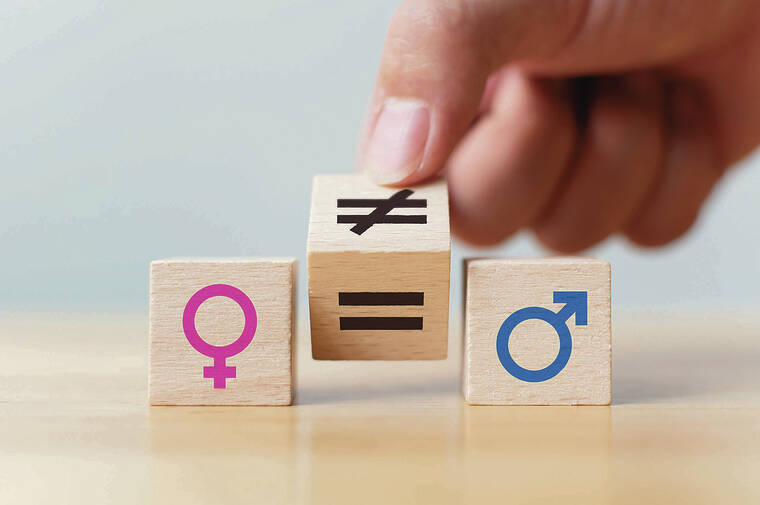We should take note of Shakespeare’s words in the play, “Julius Caesar”: Beware the Ides of March (March 15). That’s because Tuesday, March 15, will be the national observance of “Equal Pay Day,” the day when we recognize the existing wage gap between working women and men and offer remedies to address pay inequity. That date illustrates how far into 2022 women must work to earn what men earned by the end of 2021. Because women on average earn less than men, they must work longer for the same amount of pay. Perhaps we should refer to March 15 as “Unequal Pay Day”!
American Association of University Women (AAUW) research shows that the national gender pay gap has unfortunately remained relatively steady over the past several years, with women making about $0.83 for every $1 that non-Hispanic white men earn. The wage gap is even greater for most minority women.
Using the latest available data from 2019, working women in Hawaii do slightly better than the national average. We are paid about $0.89 compared to $1 for men. Unfortunately, that’s hardly a reason to celebrate, when women and families are being shortchanged thousands of dollars a year and hundreds of thousands of dollars over a lifetime.
Also, based on 2019 data, the National Women’s Law Center reports that in Hawaii Native Hawaiian and Pacific Islander women’s median annual earnings are just 61% of white men’s earnings, and Asian women make only 70%.
Other minorities also experience large pay gaps. For example, a report from the Hamilton Project shows that women in same-gender relationships make less than men in same-gender relationships. They also make less than those in opposite-gender relationships. Where both partners work, research shows that same-gender married men make 31% more than same-gender married women. So, women in same-gender relationships face a double pay gap: one based on gender and one on sexual orientation.
The gender wage gap significantly penalizes families and households in Hawaii, since many must rely on more than one income to survive. The gender pay gap penalizes children unduly, because many children reside in single-parent households, with mothers often working in minimum wage jobs.
The gender wage gap exists across all types of businesses, occupations and educational levels. Earning less throughout a lifetime significantly reduces women’s chances for secure retirement. As reported in the Honolulu Star-Advertiser in a Feb. 8 article, “A Rocky Financial Road,” more women than men over 65 live in poverty, and this gap increases significantly for minority and single women.
Hordes of women left the workforce when businesses and schools closed because of COVID-19. While the true impact of the pandemic on the gender pay gap is as yet undocumented, and many women are returning to work, their employment stoppage is expected to be a substantial and long-lasting setback for gender equity. Recent reports show that there are more than 1 million fewer women working now than prior to the pandemic. Some suggest that this may provide an opportunity to decrease the pay gap thanks to the current labor market where jobs are plentiful, and women have bargaining power.
It’s time for Hawaii to take advantage of this opportunity to work toward gender pay equity by increasing the presently inadequate minimum wage, actively enforcing all civil rights and fair labor laws, and encouraging more family- friendly work polices, such as flexible schedules, remote work, paid family leave and increased access to paid child care. Additionally, women can improve their salary negotiation skills by participating in training sessions, such as AAUW’s online workshops, Work Smart and Start Smart.
Jean Evans is a member of the AAUW (American Association of University Women) Hawaii Public Policy Committee.

